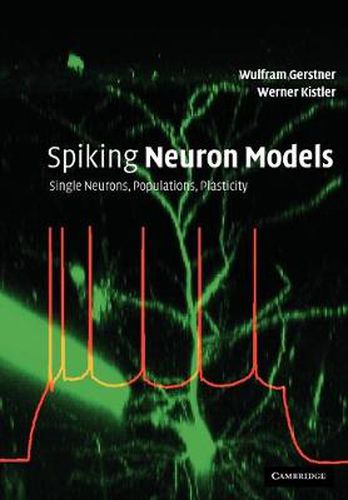Readings Newsletter
Become a Readings Member to make your shopping experience even easier.
Sign in or sign up for free!
You’re not far away from qualifying for FREE standard shipping within Australia
You’ve qualified for FREE standard shipping within Australia
The cart is loading…






Neurons in the brain communicate by short electrical pulses, the so-called action potentials or spikes. How can we understand the process of spike generation? How can we understand information transmission by neurons? What happens if thousands of neurons are coupled together in a seemingly random network? How does the network connectivity determine the activity patterns? And, vice versa, how does the spike activity influence the connectivity pattern? These questions are addressed in this introduction to spiking neurons aimed at those taking courses in computational neuroscience, theoretical biology, biophysics, or neural networks. The approach will suit students of physics, mathematics, or computer science; it will also be useful for biologists who are interested in mathematical modelling. The text is enhanced by many worked examples and illustrations. There are no mathematical prerequisites beyond what the audience would meet as undergraduates: more advanced techniques are introduced in an elementary, concrete fashion when needed.
$9.00 standard shipping within Australia
FREE standard shipping within Australia for orders over $100.00
Express & International shipping calculated at checkout
Neurons in the brain communicate by short electrical pulses, the so-called action potentials or spikes. How can we understand the process of spike generation? How can we understand information transmission by neurons? What happens if thousands of neurons are coupled together in a seemingly random network? How does the network connectivity determine the activity patterns? And, vice versa, how does the spike activity influence the connectivity pattern? These questions are addressed in this introduction to spiking neurons aimed at those taking courses in computational neuroscience, theoretical biology, biophysics, or neural networks. The approach will suit students of physics, mathematics, or computer science; it will also be useful for biologists who are interested in mathematical modelling. The text is enhanced by many worked examples and illustrations. There are no mathematical prerequisites beyond what the audience would meet as undergraduates: more advanced techniques are introduced in an elementary, concrete fashion when needed.